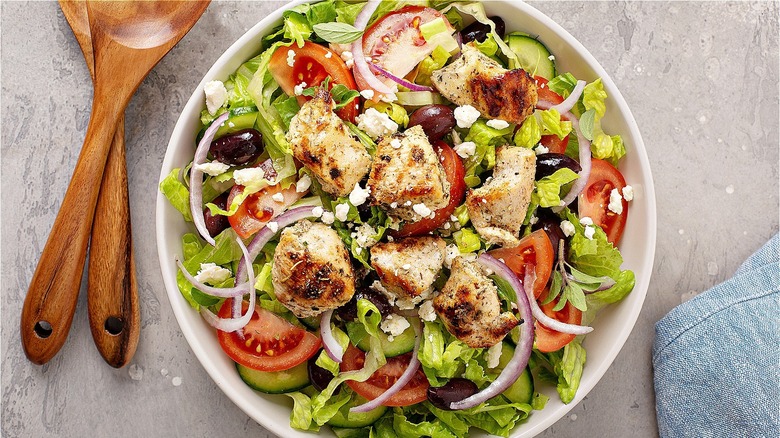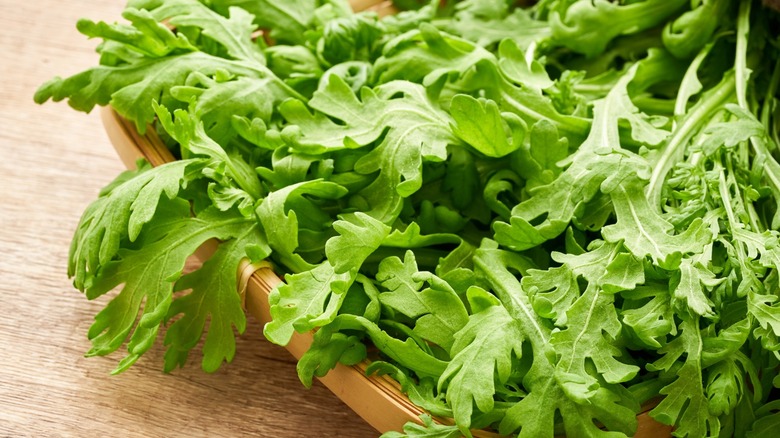The Flowery Leaves That Will Enhance Your Next Salad
If salads dominate your rotation of frequently-made meals, it can be easy to fall into an iceberg lettuce cycle or romaine rut. But most grocery stores stock such a wide variety of leafy greens that there's no reason to ever eat a boring salad. What really makes leafy greens a good dietary addition goes beyond their nutritional value. From classics like romaine to more eclectic options like dandelion greens, the base of the salad plays a critical role in your dining experience. According to Food52, the greens you decide to include in your salad should depend largely on what's going on top of it.
For example, you wouldn't want to weigh down a bowl of dainty arugula leaves with a cream-based dressing. Instead, you'll want to opt for something lighter — you can always add a creamy cheese on top. Once you know what category of greens you'd like, your end product will depend on the freshness of what's available, per America's Test Kitchen. Reach for the nicest-looking choice at the store or in your fridge, and avoid anything that appears wilted.
Some less common leafy greens don't receive the hype of the ones we see every day. If you come across chrysanthemum greens, resist the urge to walk by without picking them up. Serious Eats reports that they can elevate your salad to a new level.
Boil mature chrysanthemum greens to reduce bitterness
If you find yourself stuck in a cycle of predictable salads made with the same old types of leafy greens, you might want to take a trip to your nearest Asian market. According to Serious Eats, that's where you're likely to find chrysanthemum greens. These leaves, which come grow alongside flowers called mums (short for chrysanthemums), are most often available from spring through autumn. Their flavor depends on both when you harvest them and how you prepare them.
You can eat a young chrysanthemum green raw — stalk, leaf, and all. But a bitter flavor emerges as the plants age, which you can dial down by cooking them. Even if you're working with mature chrysanthemum leaves, be careful not to overcook them. You can boil them in water for 30-45 seconds until they become soft. However, if you cook the greens too long, they'll develop an icky, slimy, smushy texture. The quality that distinguishes chrysanthemum greens from other lettuces is the grassy flavor they deliver with every bite, Diversivore notes.
There are perks to experimenting with chrysanthemum greens in the kitchen. For one, they're packed with nutrition, per Chefin. These greens contain carotene, flavonoids, vitamins, potassium, and an antioxidant called chlorogenic acid. They can also protect from lung cancer, kidney stones, heart problems, and other health concerns.
If you want to use chrysanthemum greens for something other than salad, try including them in an easy Shabu Shabu recipe.

